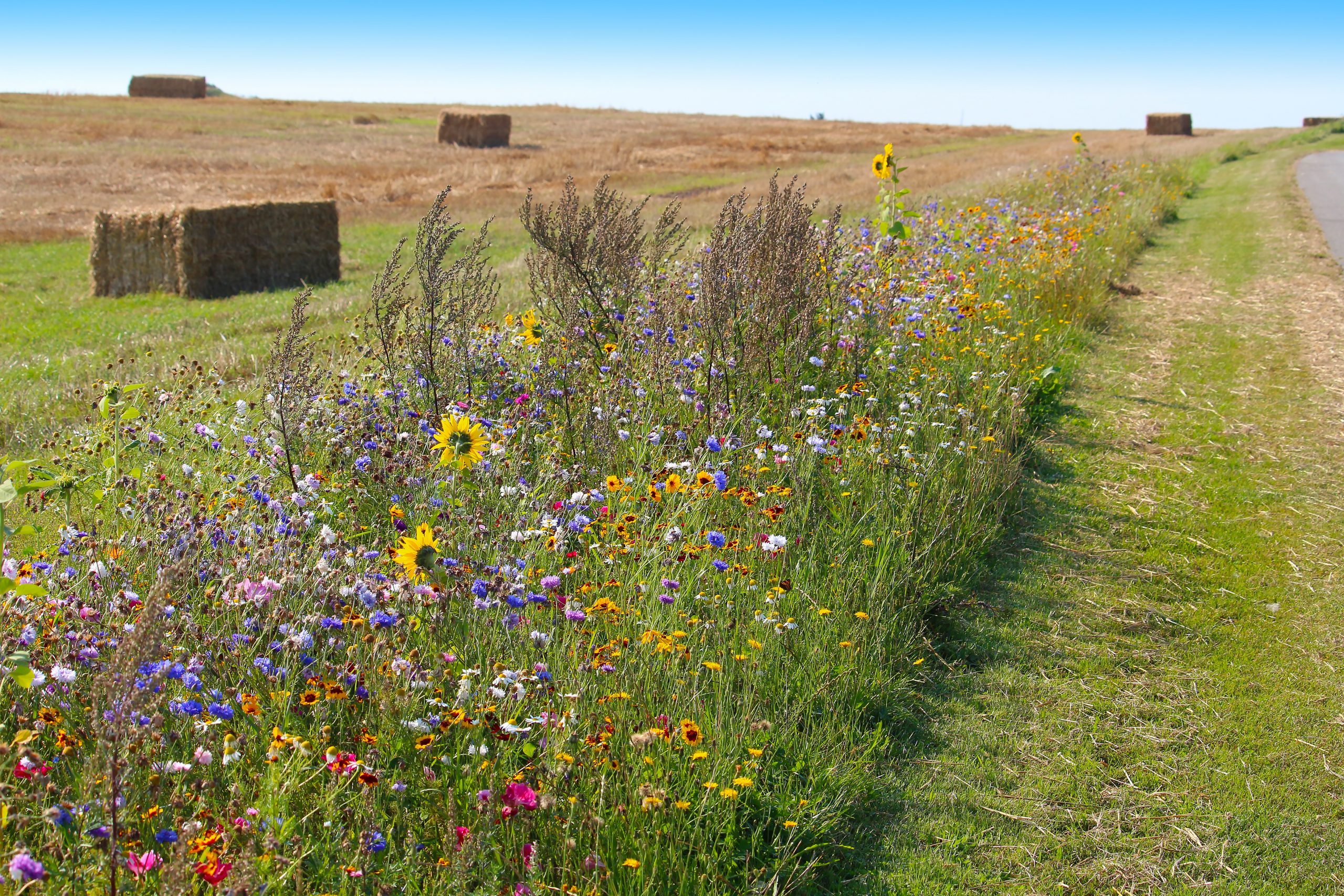Hydroseeding Wildflowers for Insects

When we think of the beauty of nature, wild flowers often come to mind. From the bright yellow of the dandelion to the soft purple of the lavender, they bring a bright splash of colour to the countryside and offer a rich source of pollen and nectar to insects.
Unfortunately, in recent years, the UK has seen a dramatic decline in the number of wild flowers, a worrying trend that is having a devastating effect on insect populations. The causes of wild flower decline are numerous, but one of the most significant has been the intensification of agricultural practices.
As the demand for food increases, farmers are increasingly utilising large–scale industrial farming, which entails the use of pesticides, herbicides, and fertilisers.
These practices, while beneficial for producing a high yield of crops, can have a negative effect on the environment. In particular, they can lead to the destruction of wild flower populations, which are essential for the survival of many insects.
Another major factor contributing to the decline of wild flowers is the destruction of their habitats. Much of the UK’s meadows and grasslands have been lost to urbanisation and development, leading to a decrease in the number of suitable environments for wild flowers.
Hydroseeding Wildflowers
Hydroseeding wildflowers is a great way to restore ecosystems and beautify landscapes. It is a process that uses a specialised mixture of water, seed, mulch, and fertilizer to create a lush and vibrant garden.
The hydroseeding process is relatively simple and cost effective compared to other methods of seeding, and it can be used to quickly and easily introduce a variety of wildflowers into any area. The mixture used in hydroseeding is typically made up of a water–soluble fertilizer, mulch, and a wide variety of wildflower seeds. The mulch acts as a protective layer, keeping the seeds and fertilizer in place while they are sprayed onto the ground.
Once applied, the mixture is then tilled into the soil to ensure proper germination of the seeds. The most important step in hydroseeding is to make sure the soil is properly prepared. The soil should be free of debris and weeds and should be moist but not overly wet. If the soil is too wet or too dry, the seeds may not germinate properly or may be washed away by the rain. Once the soil is properly prepared, the hydroseeding mixture can be applied and allowed to soak in.
Contact Hydro-App
If you are looking for advice on Hydroseeding we recommend Hydro-App in Nottingham.
They are market leaders in Hydroseeding Machines and all equipment is maintained to the highest standards with full CE marking conformance.
With over 20 years of combined knowledge and real-world experience in Wildflower Seeding, erosion control and environmental contracting, you will be in safe hands.